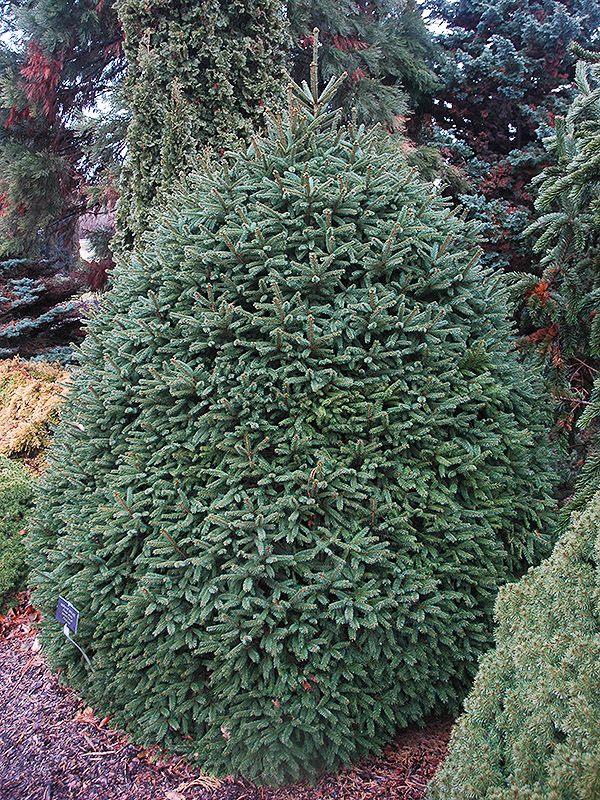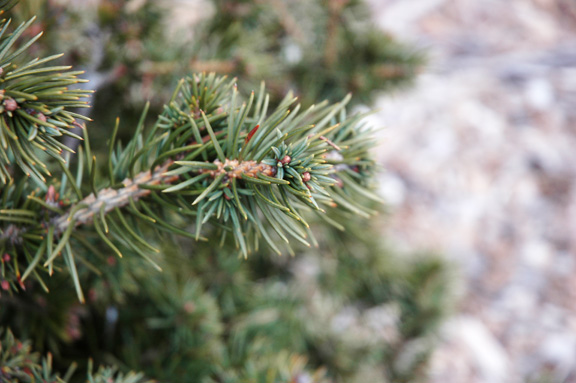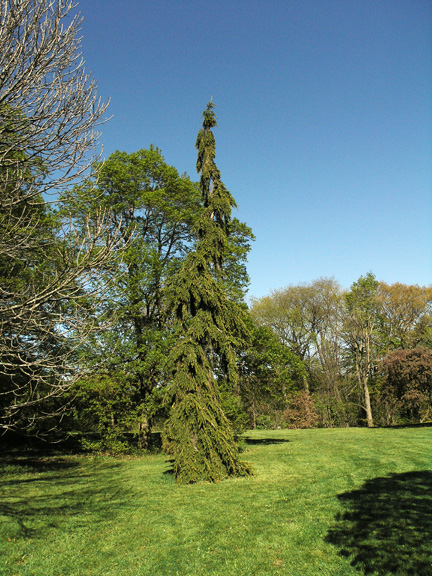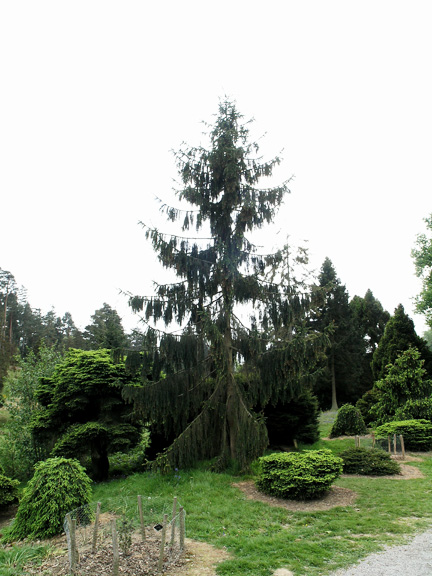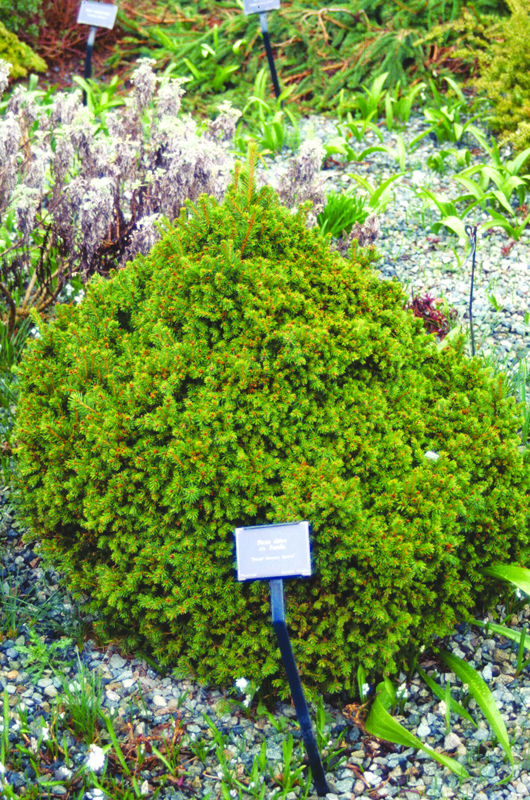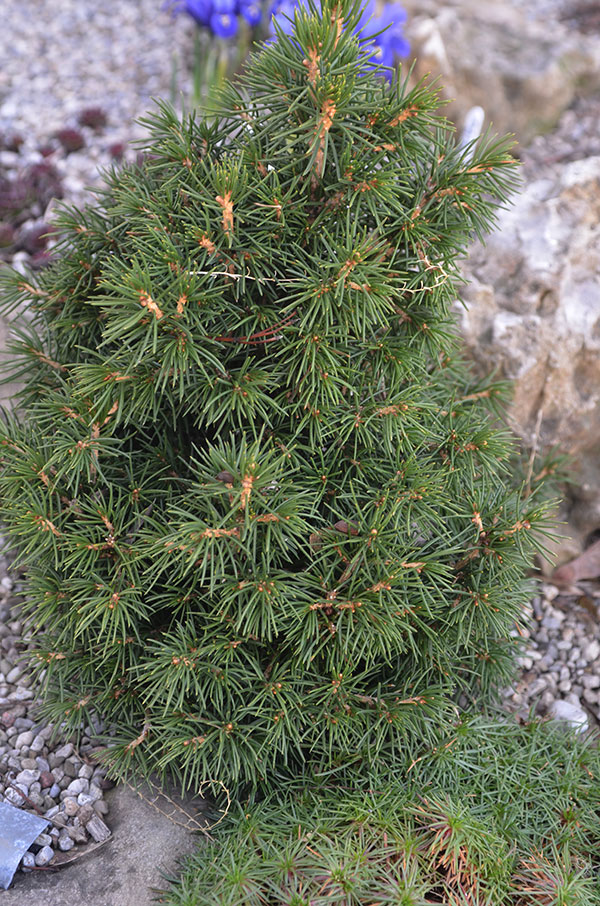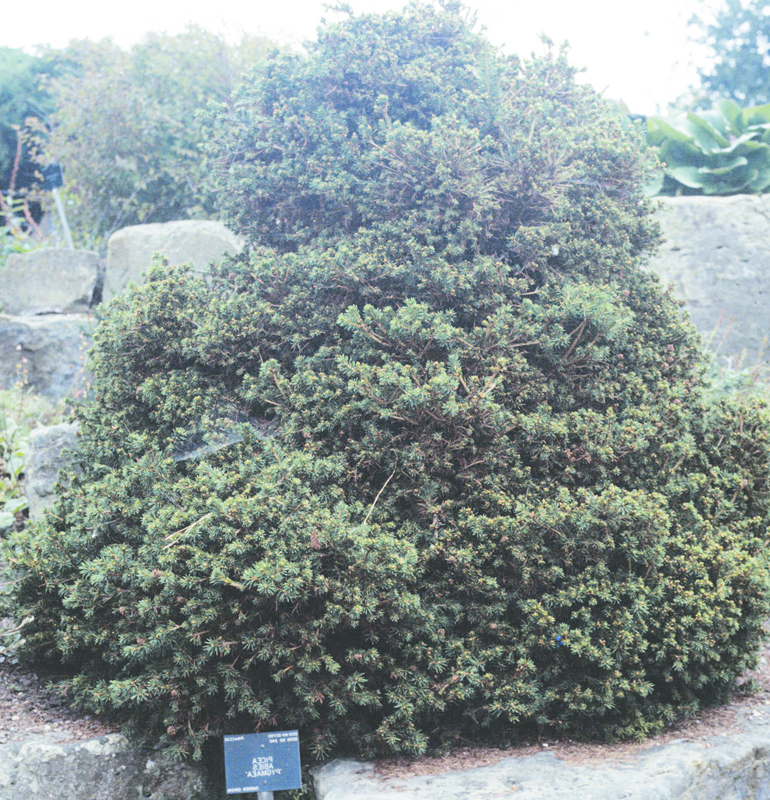
Woody > Picea > Picea abies > Picea abies
Picea abies
Norway Spruce
Origin: Native to northern and central Europe.
Mike's
Opinion


"
A popular evergreen, possibly superseding our own native white spruce in use. Often used as windbreaks, mass plantings and specimen plantings.
Michael Pascoe, NDP., ODH., CLT., MSc. (Plant Conservation)
"
| Family |
| Pinaceae |
| Genus |
| Picea |
| Species |
| abies |
| Category |
| Woody |
| Type |
| Tree (evergreen) |
| Pronunciation |
| USDA Hardiness Zone |
| 2 - 7 |
| Canadian Hardiness Zone |
| 0a - 7a |
| RHS Hardiness Zone |
| H5 - H7 |
| Temperature (°C) |
| -46 - (-12) |
| Temperature (°F) |
| -50 - 10 |
| Height |
| 12 - 18 m |
| Spread |
| 7.5 - 9 m |
Photographs
Description and Growing Information
Flowering Period
| General Description |
| It is a large tree that has an elegant pyramidal form with pendulous branches curving upwards. The branches are a distinct orange brown on the underside. Branches grow low to the ground and the tree can be used as an effective windbreak. |
| Landscape |
| Often used as windbreaks, mass plantings and specimen plants. |
| Cultivation |
| Plant the tree in full sun, tolerates some shade. It will tolerate a variety of soil types. It does best growing in moist loam soils. Not drought tolerant. |
| Shape |
| Pyramidal with pendulous branches. |
| Growth |
| Fast |
| ID Characteristic |
| Weeping branches with a stem of 45°. Shoots have orange brown undersides curving up with dark green needles. Cones are one of the largest of any spruce, about 12 - 16 cm and reddish brown in colour. |
| Pests |
| Can be susceptible to spruce gall. |
| Habitat |
| Found growing throughout central and northern Europe southwest even towards the end of the Alps. |
| Bark/Stem Description |
| Thin bark that thickens with age. It has a reddish brown colour becoming grey-brown and forming scales towards maturity. |
| Flower/Leaf Bud Description |
| Conical, reddish to light brown. They are non-resinous and no larger than 90 mm in size. |
| Leaf Description |
| Straight, stiff, 1 - 2.5 cm long sharp pointed and dark green on all sides. |
| Flower Description |
| Monoecious, males are auxiliary and females are terminal and reddish-pink in colour. Both are about 2.5 cm in size. |
| Fruit Description |
| Cylindrical cones 12 - 16 cm long, 3 - 5 cm wide. Fruiting time is generally September through October. |
| Colour Description |
| The needles are green and the bark a reddish-brown colour in youth, turning a grey colour as it ages. Cones are light brown with a hint of red. |
| Texture Description |
| Medium textured tree if not sheared. The sparse branching plant thickens with age. |
| Notable Specimens |
| The Gardens of Fanshawe College London, Ontario, Canada. |
| Propagation |
| Propagated by seeds in the autumn, as well as cuttings. Take a cutting of a semi-ripe terminal shoot about 5-8 cm long in August. Rooting will occur over the winter months in the greenhouse. |
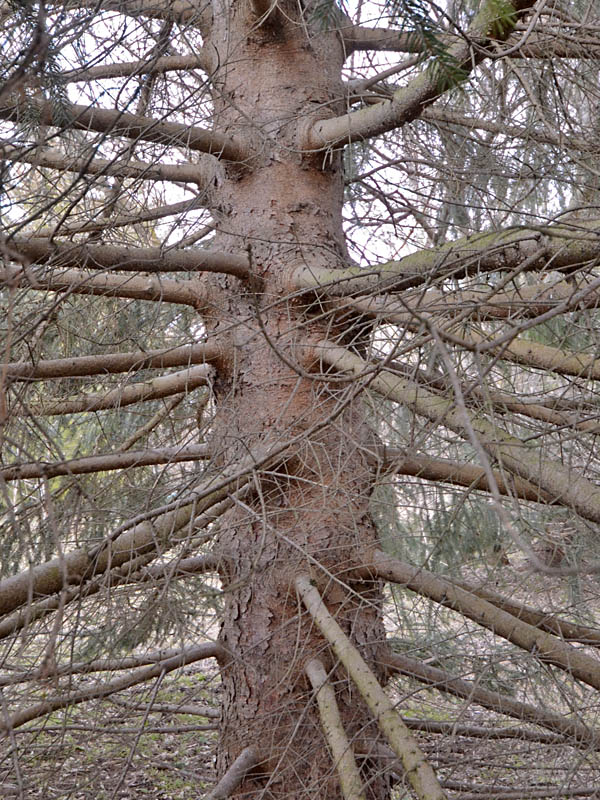
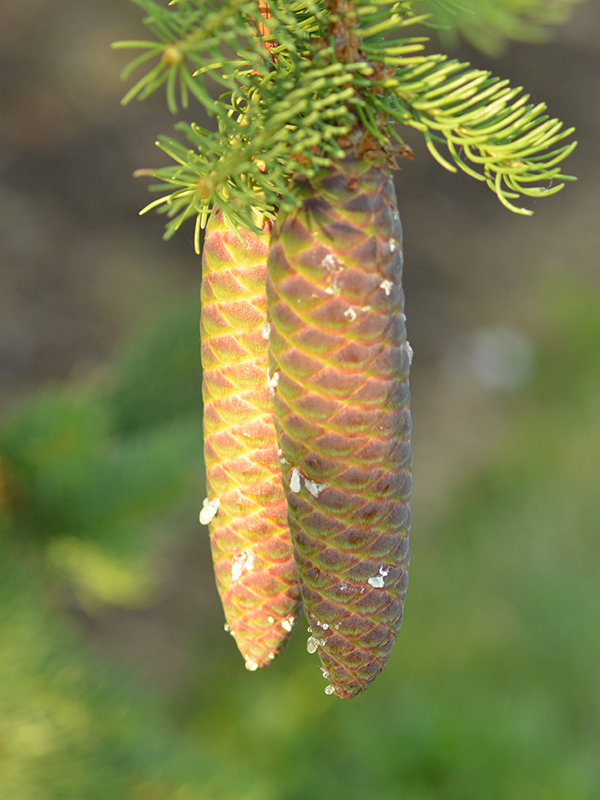
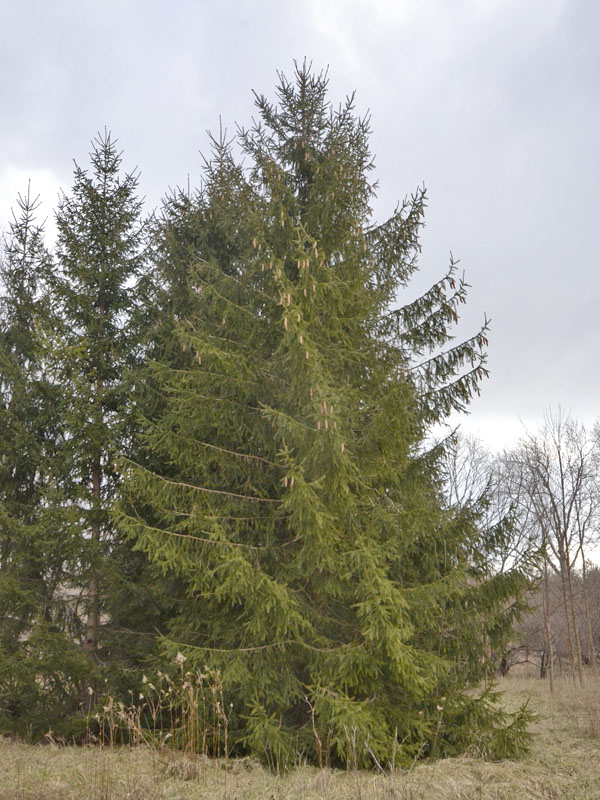
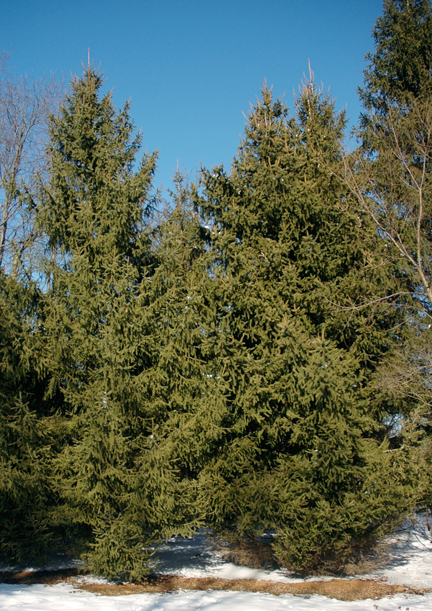
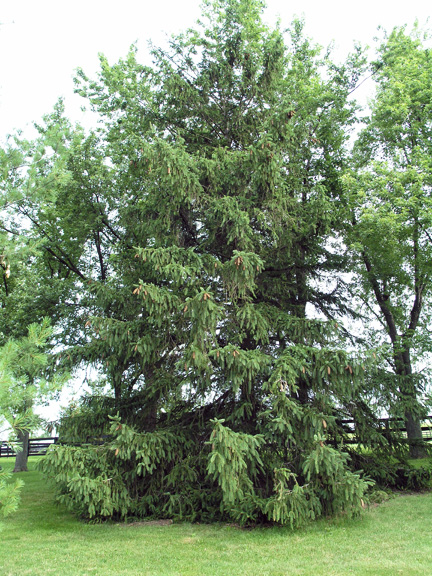
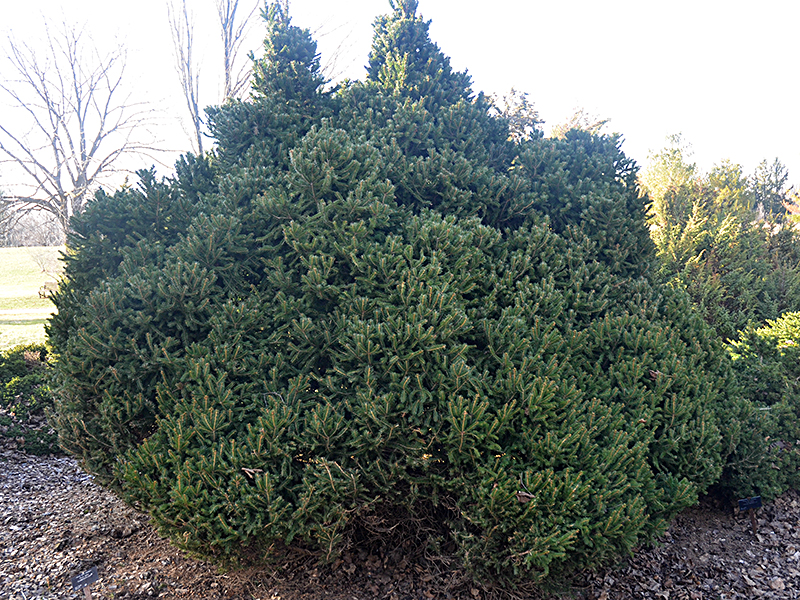
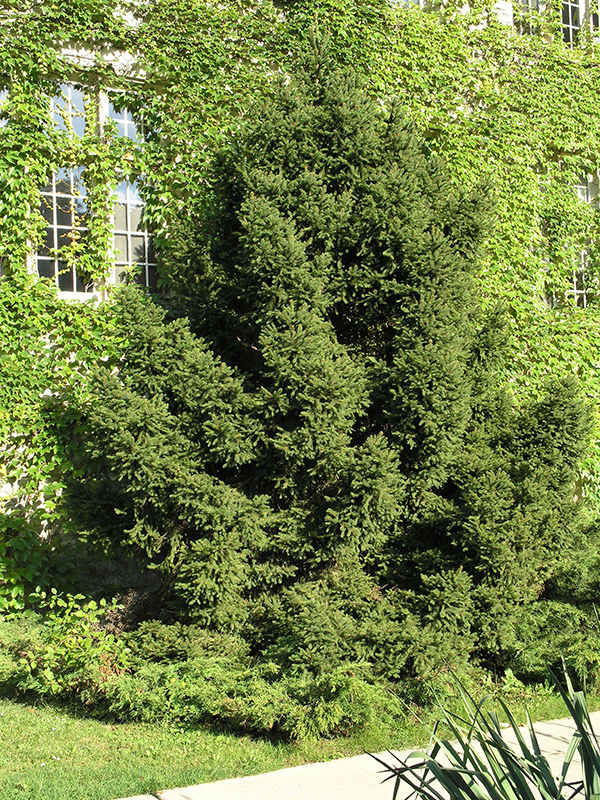
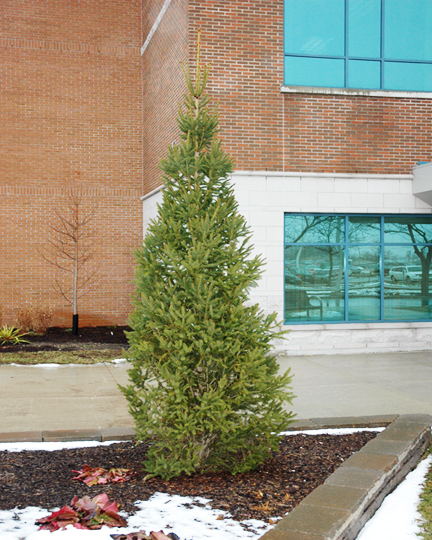
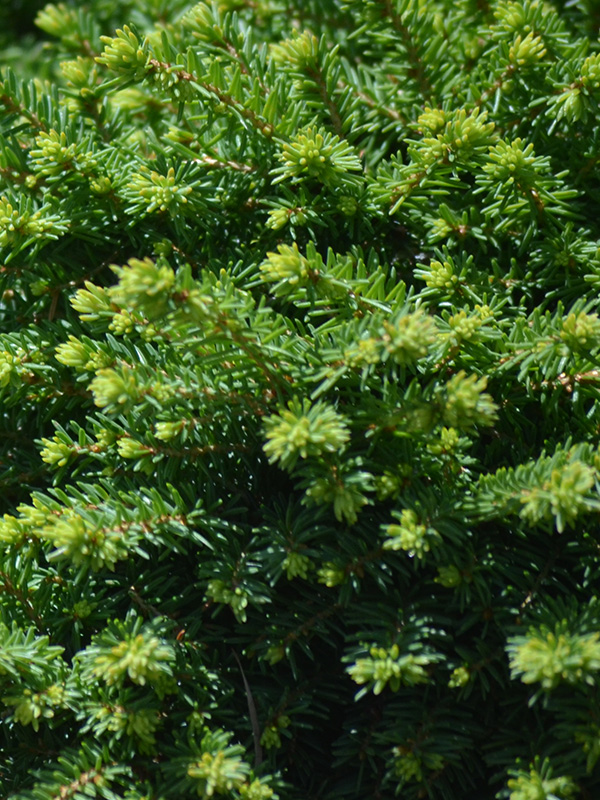
.jpg)
